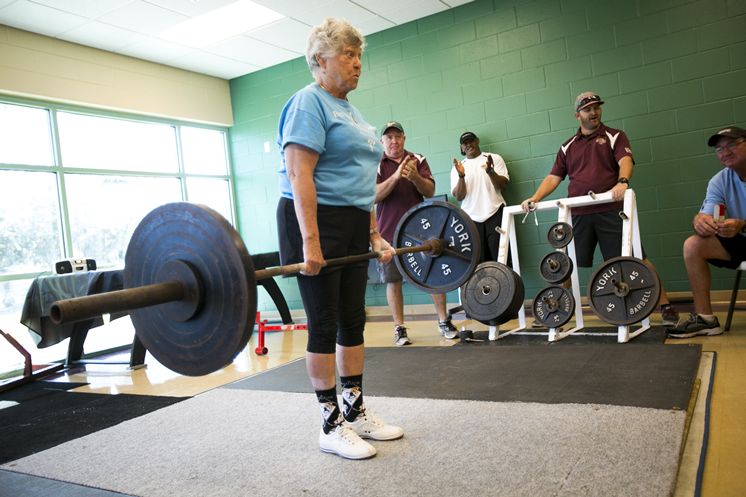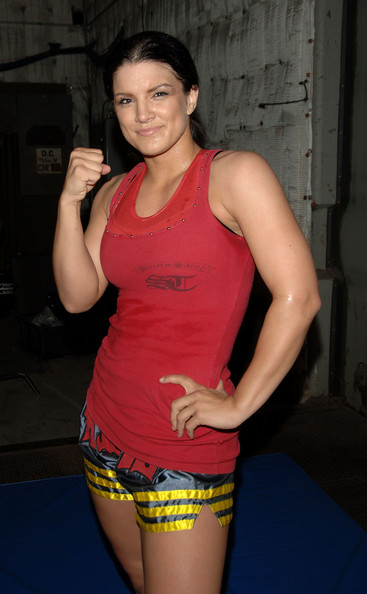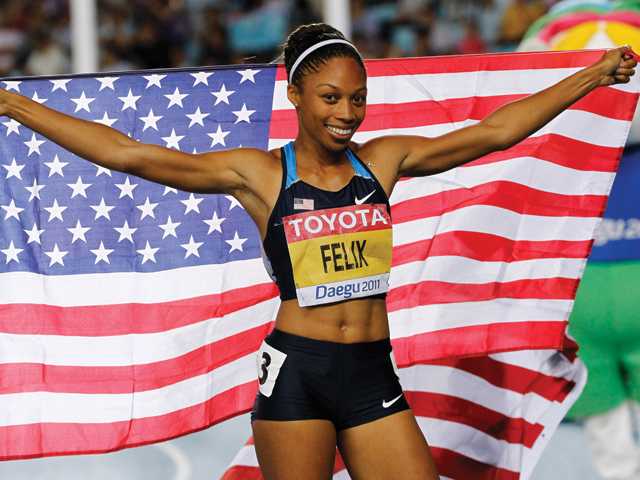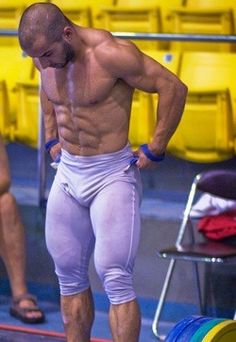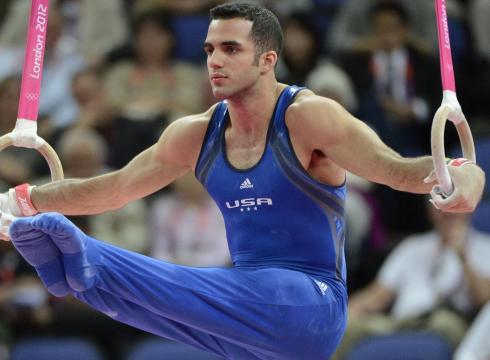Here are 13 exercises to build strength and improve your running form right in your living room or yard. Check out my latest article for Podium Runner: No gym? No Problem. Get Strong at Home. Here’s one exercise, the improvised squat:
strength training
Got Pain? Don’t Stretch, Strengthen.
Standard
If you’re like many runners, stretching is your first course of action when you feel pain. Sore Achilles tendon? Stretch the calf. Sore knee? Stretch the quads or the IT band.
The problem is, tight muscles are rarely the root cause of pain, so stretching rarely solves the problem. A better solution for chronic, training-related pains and injuries—one with more evidence behind it—is strength training.
Read the rest of the article, my latest for PodiumRunner.com.
Training Errors & Three Toos
StandardThe three twos: Too much, too fast, too soon.
Lately, I’ve been listening to Jason Fitzgerald’s Strength Running podcast. As the name implies, his show discusses
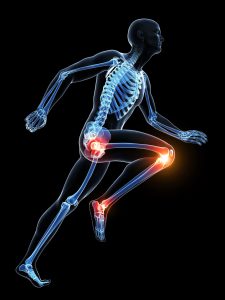
Running too much, too fast, too soon is a recipe for injury.
strength training for runners. I think it’s excellent and full of useful information. If you’re a coach or trainer who works with runners, or if you’re a runner with an inquisitive mind who wants to improve your performance then you will enjoy it.
A recent episode reminded me that training errors may be the most common source of injury among runners. Jason said he had a cross country coach who used the term the “three toos,” meaning too much, too fast, too soon. Many of us get hurt by running too many miles, running too fast, and doing either or both before we’re ready for all that training stress. Research shows that injuries are often preceded by inappropriate, excessive increases in training stress.
(This problem of excessive training isn’t confined to runners. Almost anyone from bodybuilders to cyclists to golfers with a zest for physical activity and competition, who believe himself or herself to be eternally bulletproof and able to withstand superhuman levels of grueling hard work may succumb. I think social media exacerbates the problem.)
I often write about aches, pains, and how to recover from injury. Much of what I do with clients involves doing specific exercises to either mobilize a joint, increase his/her movement skill, or get stronger in a specific way. My thinking (and I don’t think I’m the only one) goes that if this hurts then that exercise will fix it. That may not be the best way to approach a problem though. To get a full picture, I need to always remember to ask the question, “What happened before you got hurt.” Unless someone suffered an acute injury, it’s likely that he or she increased their training suddenly and did more work than his/her body could handle. Smart training is the best protection and that’s why hiring a coach to help you with your training is a good idea.
Training Update: 10 Days Until Behind the Rocks
StandardI’m running the Behind the Rocks 30k in Moab, Utah on March 23rd. It’s my first race of the season and my first race since my calf injury last year. I’m happy to report that all my parts feel strong. I’m pleased and proud to have overcome the problems from last year. Strength training aimed directly at the calf has been the key.
Calf exercises
Calf and lower-leg strengthening is my religion. I do specific calf strength exercises twice a week. I rotate among the following exercises. I also jump rope and do other two- and one-leg jumping exercises at least once a week:
I use several different weight and rep schemes for the exercises:
- Heavy loads for <6 reps. This builds strong muscles and strong, stiff tendons. Stiff tendons are like stiff springs. Stiff tendons absorb and transmit forces efficiently which makes for efficient running.
- Moderate loads for 8-15 reps. This builds muscle bulk. More muscle mass helps make muscles strong and durable.
- I may go as high as 20-30 reps for the mini-squat. That’s due to the soleus muscle (the main muscle in that’s worked in the exercise) being comprised mostly of endurance muscle fibers. I typically put a barbell on my back.
- For the jump rope, I’ll mix two- and one-leg jumping and I’ll jump for about 1 minute x 5 sets.
Other key exercises
The hip hike and offset lunge are great exercises for lower legs, quads, glutes, hip adductors and hip abductors.
I like the single-leg tubing squat as well.
Coaching
Finally, Coach Andrew Simmons of Lifelong Endurance has been indispensable. He listens to me, pays attention to detail, and inspires confidence. I’m grateful to have his guidance. If you’re looking for a running coach, I recommend him highly.
Strength Training Fights Cancer
Standard“The study shows exercise that promotes muscular strength may be just as important for health as aerobic activities like jogging or cycling,” said Associate Professor Stamatakis.
“And assuming our findings reflect cause and effect relationships, it may be even more vital when it comes to reducing risk of death from cancer.”
That statement comes from Associate Professor Emmanuel Stamatakis of the School of Public Health and the Charles Perkins Center at the University of Sydney. He’s the lead researcher in a study titled Does strength promoting exercise confer unique health benefits? A pooled analysis of eleven population cohorts with all-cause, cancer, and cardiovascular mortality endpoints. The study appears in the American Journal of Epidemiology.
I’m surprised and delighted by this finding. Most of us have known for a quite a while that exercise of some variety or another helps reduce cancer risk. Most of the research has looked at exercise with a cardiovascular emphasis such as walking, cycling, and swimming. This study is novel in that it looks at strength training.
This is great news to those of us who like to lift heavy stuff! However…
Strength training has a negative connotation for some people. Some people say, “I don’t wan to get too big,” “I don’t want to get hurt.” Other people associate strength training with the bizarre bodybuilding steroid stereotype. None of this needs to be true! Lifting heavy stuff can be very safe, it can be done by normal people in an enjoyable way — and now we know it’s the smart, healthy thing to do. If you’re not lifting, then you should be and I’ll be glad to help you do it right.
Breaking Plateaus: the MilitaryPress
StandardI’m a big fan of the military press (aka the press, the standing press, the overhead press). I like putting the weight overhead. It’s a challenging total-body exercise that in my mind probably delivers more useful strength and skill than something like a bench press. I’d like to press 200 lbs. which is my body weight. For that reason, I tend to lift heavy and I typically don’t go above five reps per set. My progress stalled for a while so I went on the hunt for ways to move it along. This led me to read up on all kinds of interesting ways to break through plateaus. (Admittedly, a torn ACL didn’t help my pressing. My press was slowing down though prior to the tear.)
To get stronger we generally need to add weight to whatever it is that we’re lifting. This is the simplest, most obvious way to get stronger. It’s inevitable though that at some point our progress will slow and we’ll have to find other ways to move forward in our strength training. Here are a few methods I’ve used to improve my press:
- Weight: A lot of people tend to lift in the same rep range. I often see people in commercial gyms lifting in the 10-15 rep neighborhood. A good way to make progress is to add weight and move down in reps. The 5-rep and below range is good for getting stronger. In contrast, if we’ve been lifting in the low-rep range, there might be a benefit to reducing weight and adding reps.
- Speed: We can subtract weight and move faster. To get fast we need to move fast. If we reduce the weight (40%-60% of your 1-rep max) and move very fast then we get a very different type of powerful stimulus to the muscles. I’ll talk about this more below.
- Different exercises and movement patterns: If progress stalls on the barbell military press then we might want to switch to an incline barbell press, or a dumbbell military press, or a seated military press, or a behind-the-neck press. You see my point? Choosing an exercise that’s the “same but different” can help us make progress in our main lift.
- Bring up weak points: I’m not much of a fan of bodybuilding-type training in which individual muscles are emphasized. That’s not to say there isn’t a place for this approach. If we look at the particular muscles involved in a given lift then we might use exercises to isolate those muscles and make them stronger and/or add mass. For instance, we could use tricep extensions in order to strengthen that piece of our press. Similarly, we might look at supporting musculature–the upper back for instance–and target those muscles to a stronger foundation from which to press.
Here’s some more on my experience with dynamic effort, “same but different” and some bodybuilding work.
Dynamic Effort
Speed and strength live in the same house. They are very close acquaintances. They have a lot of physiological similarities. Training one tends to help the other. Fast twitch muscle fibers are our strong and fast fibers. They should be trained with heavy weights as well as high velocities.
As we add weight to the bar, the bar slows down. We create more force but we don’t create speed. If we want to train speed then we need to lighten the load considerably and move a lot faster. The Westside Conjugate Method addresses both strength and speed during the week. Max Effort (ME) day has lifters lifting very heavy weights and generating a lot of force but at a slow velocity. Dynamic Effort (DE) day has the lifter using much lighter loads moved at a high velocity. This creates explosion.
Incorporating a dynamic effort day into your lifting may help you break through any current plateaus you may be experiencing. If you’ve never employed the DE method, then you probably have a nice well of untapped potential and you’ll likely see impressive results fairly quickly.
I’ve from pressing 135 lbs. for 2 reps to 145 lbs. for 3 reps in about four weeks since incorporating the DE method. Cool! As advocated by Louie, the DE day came 72 hours after the ME day. I typically did 10 sets of 2 reps, adding 5 lbs. each week.
At no time did I become anything like exhausted by the DE work. That isn’t the point. Speed is the point. If you get tired then you’ll slow down. Don’t expect to experience a typical workout feeling with DE work.
Louie wrote an article titled Westside Military Press Training for Mike Mahler’s Aggressive Strength site. Here are the tips:
- Do the seated press with dumbbells. Choose three weights for example 100 lbs, 75 lbs, and 50 lbs. Work on setting a repetition record with one dumbbell weight. the reps should range from 10 to 25 reps.
- Do dumbbell extensions or barbell extensions for special work along with rear, side and front raises.
- Do barbell pressing in the following manner. Ten sets of three reps in a three- week wave. 70% the 1st week 75% the second week and 80% the third week. Pendulum back to 70% and start over. Second day 72 hours later do max effort work.
- Use chains on the bar or JUMPSTRETCH bands to accommodate resistance. (Editor’s note: Usually as the bar gets close to lockout you will naturally slow the bar down. The bands keep the resistance on all the way to the end).
- Work up to new PR in the incline press.
- Do rack lockout work on the high pin where 10%-15% highest weight can be done.
Developing the Overhead Press is another good article on Mahler’s site. If you like to press then read it!
The Conjugate System can get a little complicated and hard to understand. For a very good and concise explanation of the system, check out Jordan Syatt’s article The Westside Conjugate System: A User’s Guide.
Other ways to train speed (either lower or upper body) include the following:
- jumping
- medicine ball throws
- plyometric pushups
- power pull-ups: Do these explosively for 1-3 reps.
Same but different
I’ve varied the way I press–but I’ve kept pressing. In the book Easy Strength, Pavel Tsatsouline talkes about the “same b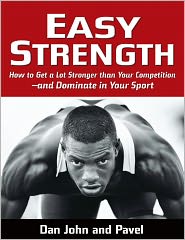
A similar process is proposed by Bill Starr in the book the Strongest Shall Survive. This system employs a heavy/light/medium approach to lifting where the exercises are changed slightly between each workout. For example, the back squat is used on the heavy and medium days and the front squat is used on the light day. Presses alternate from the bench press to the military press to the behind-the-neck press. Read the book to learn more.
In my case, I’ve incorporated the standing behind-the-neck press as well as seated dumbbell or kettlebell presses in which I sit on the floor with my legs straight out in front. I do these for reps.
Here are some examples “same but different” changes we could incorporate into our press routine
- military press to behind-the-neck press to incline press
- standing press to seated press
- handstand or incline pushups
- dumbbells and/or kettlebells in place of the barbell
Other things
I’ve also incorporated back-off sets after my heavy pressing days. I reduce the weight considerably and press for 10-12 reps. I expect this to help build some mass.
I’ve used dumbbell rear delt flyes to help build my upper back. I do these for 8-15 reps typically and I vary the weight each workout. This is the type of bodybuilding isolation work that I haven’t done in years.
Finally
I’ve just scratched the surface with this stuff so I anticipate continued progress. As my ACL heals I expect progress to accelerate quite a bit. This has been a very interesting process. I’ve enjoyed learning about and applying these concepts, particularly the dynamic effort work. I just recently started a little bit of jumping. I expect this to help my squat and deadlift. I plan to keep a speed day as part of my workout plans.
Size Matters Not: A Case for Strength Part III
StandardWho should be strong and why?
Clearly athletes benefit from more strength, but what about someone who doesn’t label him or herself an “athlete?” Well, strength is like money in the bank: No one ever complained about having too much. No matter who you are, you will benefit from more strength. Here’s a list of who can benefit from strength and why:
- Endurance athletes

Paula Radcliffe holds the women’s world record in the marathon. That looks to be about 150-160 lbs. that she’s squatting.
Plenty of research exists showing that the ability to put more force into the ground, into the pedals or into the water will make you faster. For runners, heavy strength work enhances the spring-like qualities of the Achilles tendon and other connective tissue that aids in running. More strength can help the endurance athlete maintain good form as he or she tires during an event.
- Senior citizens
I mentioned previously that proper strength work creates stronger bones. That’s good for anyone with bone density issues. Beyond that, strength goes hand-in-hand with balance. Strength enables you to better keep yourself from falling and it will help you get up if you fall. -
Do you want to look good?
It’s interesting, when you get strong, you tend to look strong. Posture often improves as part of the process. For a lot of people, heavy strength work works nicely to stimulate the metabolism, especially if they’re new to heavy lifting. Further, multi-joint exercises like squats, push-ups and the like do a great job of creating impressive arms, shoulders, legs and all the rest. - Do you do any manual labor?
Any kind of yard work, house work, moving and carrying stuff, putting stuff overhead, shoveling snow, going up and down stairs etc. will be a lot easier if you’re stronger. The work you do in the gym should enhance your life outside the gym. Exercises like squats, presses and deadlifts loaded with enough weight will definitely help with manual labor.
-
Do you like to feel good?
Strength training carries some impressive and interesting psychological effects. A review of literature from the University of Georgia found the following psychological benefits from weight training:“The weight of the available evidence supported the conclusion that strength training is associated with reductions in anxiety symptoms among healthy adults (5 trials); reductions in pain intensity among patients with low back pain (5 trials), osteoarthritis (8 trials), and fibromyalgia (4 trials); improvements in cognition among older adults (7 trials); improvements in sleep quality among depressed older adults (2 trials); reductions in symptoms of depression among patients with diagnosed depression (4 trials) and fibromyalgia (2 trials); reductions in fatigue symptoms (10 trials); and improvements in self-esteem (6 trials). “
(From my observations: For some magical reason, deadlifting a new 3-rep max has a much more powerful and positive effect on the mind and emotions than does curling 2 lb. periwinkle dumbbells for 30 reps.)
How to get strong
-
Reps and sets:
In a nutshell, the way to get stronger is to lift heavy. How heavy? Look at the chart. If the training objective is strength then we’re looking at lifting something for fewer than six reps. The weights used are 85% of your 1-rep max (1RM) or greater.Effective set/rep schemes include: 2-5 sets of 5 reps, 3 sets of 3 reps, 5 sets of 2 reps and 6 sets of 1 rep.
-
Exercises:
The best strength-building exercises are multi-joint exercises. They include but aren’t limited to the following:- squats
- deadlifts
- overhead press
- bench press
- rows
- cleans
- snatches
- push-ups
- pull-ups
A solid strength workout can be built around one or two, maybe three of these exercises (squat, overhead press, row for example). There’s no need to do them all in one workout.
In contrast, single-joint exercises like bicep curls, tricep extensions, leg extensions/curls and calf raises aren’t as well suited to enhancing strength. They have their place and they can be included in your strength workout but never at the expense of the big lifts.
Most of these exercises except for push-ups and pull-ups should be done with a barbell. Other implements like dumbbells and kettlebells can certainly be used but a barbell is the ideal tool for this type of work. As push-ups and pull-ups become easy, weight can be added.
Remember, the idea here is to increase your strength. That means weight should be added to the exercises from week to week. You can also add reps to the already-challenging weight you’re lifting. Accordingly, you should track your weights, sets and reps. You should strive for progress.
Finally, good form is vital! Heavy lifting is quite safe when done properly. If you’re hesitant then you should seek out a good strength coach or personal trainer. It’s difficult to learn how to do these exercises without good coaching. Reading a magazine article or watching other people in the gym probably won’t quite cut it.
To wrap up
I hope I’ve convinced you of the value of strength. When we’re strong we tend to look and feel strong. Through strength training we can build a strong healthy, useful body without any worry of looking overly muscular. Remember, you can get very strong with virtually no risk of looking “too big.” Sorry, I’m wrong. It’s impossible for you to get “too big.”
Seeing progress in the gym builds confidence and enthusiasm and gives purpose to our workouts. We should expect progress from exercise. Watching the weights go up is a great way to quantify our work in the gym.
Strength has real-world use. It enhances athletic performance and allows us to better take on life’s daily challenges. Strength can keep us safe too, especially from falls and injuries.
Finally, for you to get strong you must lift heavy!
More resources
I didn’t invent any of this information presented here. If you’re interested in learning more, here are some books and online resources for you. There are lot more resources out there. Don’t get confused though: To get strong, pick up something heavy! (Have I said something like that already?)
-
Books
-
Power to the People, Pavel Tsatsouline
-
Starting Strength, Mark Rippetoe & Lon Kilgore
-
Practical Programming for Strength Training, Mark Rippetoe & Lon Kilgore
-
Easy Strength, Dan John & Pavel Tsatsouline
-
-
Online
Size Matters Not: A Case for Strength Part II
StandardIn Part I of this series I suggested that you should see progress in your exercise routine. Further, I broached the idea that muscular strength and muscular size are not necessarily the same. Finally, I argued that getting “too big” is nearly impossible for you to do. This is Part II of the conversation.
Big vs. strong. What’s the difference?
Muscle bulk is what a lot of men (especially young guys) want from their exercise program. For many of you though, your fitness goals don’t include bulking up. Most women I encounter want to get leaner and essentially smaller. Obesity is a big problem in America so many of us definitely don’t need to consider enlarging ourselves. Endurance athletes don’t need to haul around extra muscle as it can hinder performance. Because of all this we see a lot of people lifting rather light weights for very high reps (15-20 or more). The problem is, you can’t actually get stronger this way.
Let me offer this thought to you: You can get stronger–without getting bigger! You can learn to create more force with your muscles without much if any additional muscle growth. The two circumstances are not the same. Strictly speaking, bigger muscles can be stronger than smaller muscles, but strength is much more than that. Strength is also very much the result of changes within the central nervous system (CNS). Here’s more on that.
Neurology of strength
It’s helpful to understand a little bit about processes by which we get stronger. Besides some potential muscle growth, what happens when we strength train? Without getting overly science-y, here’s a description:
-
Better intramuscular coordination:
This is learning to use more of an individual muscle. Muscles are made up of muscle fibers. Those muscle fibers are innervated (“fired”) by nerves. The nerve plus the muscle fibers it innervates is known as a motor unit. Untrained individuals can recruit only so many motor units for a given task. Effective strength training enables us to recruit more motor units within an individual muscle.Strength training also changes the rate at which our motor units fire. Untrained people fire their motor units more slowly than trained people. Proper strength training can enable us to fire our motor units very quickly. The result is we can be stronger and/or faster and muscle growth is unaffected.
At the same time, strength training also teaches us to synchronize these motor units to fire together. All of this is skill, and it has nothing to do with muscle growth.
-
Better intermuscular coordination:
This is better coordination of muscle groups. In looking at almost any common human movement (sitting to standing, running, reaching, pushing, pulling, lifting something off the ground, climbing stairs, etc.) multiple body parts move together. Proper exercise selection (multi-joint exercises like squats, lunges, rows, presses, etc.) plus appropriate loading of these exercises enable us to develop stronger movement patterns rather than just a stronger quad, calf, bicep, etc. This again is a way of becoming stronger without enlarging the muscles. -
What else?
Effective strength training gives us stronger connective tissue. Ligaments and tendons become stronger just like the muscles. Our bones also get stronger if we load them effectively. A good strength program is a very effective way to protect against injury and increase bone density in people of all ages and abilities.
Examples of Stronger, Not Bigger
The majority of sports actually don’t require athletes to be particularly big. American football linemen need to be big in order to
shove opponents out of the way. It’s a similar situation with sumo wrestlers. Shot putters need to be big so they can put a lot of mass against the shot. Beyond that, very large athletes are often at a disadvantage. They can’t generate as much power relative to their body weight. They can’t endure as well. Thus, for many athletes, some degree of increased muscle mass may be a good thing, but being “too big” is not an advantage. Strength however is always in demand.
Most sports involve sprinting of some sort. More strength helps an athlete sprint faster. Does more bulk help? Only up to a point. A massively muscle-bound body doesn’t help.
Weight class athletes such as boxers, weightlifters, martial artists, and wrestlers must stay within a certain weight range to compete. Now, we’ve all seen the stereotypical massive superheavyweight weightlifter or powerlifter. Look at the lighter weight classes of these sports though and you won’t see such hulking physiques. You’ll see lean, strong athletic physiques. These people are always looking to get stronger and more powerful without getting bigger.
Gymnasts are excellent examples of athletes who must be very strong and
powerful yet clearly don’t benefit much at all from enormous amounts of muscle bulk. Have you ever seen a gymnast that was “too big?”
So there are numerous examples of people who require great strength but have no need of excessive muscle. How exactly do they get there? I’m glad you asked! Stay tuned for Part III of this series.
Size Matters Not: Part I
StandardI’m very grateful to Jamie Atlas of Bonza Bodies for giving me the opportunity to write a guest post for his blog. He runs one of the big group bootcamps at Red Rocks. He’s been featured in 5280 and has been voted one of the top trainers on Denver’s A-List. Jamie also contributes a fitness column to the Denver Post. So, he’s a fairly big-time presence in the Denver health & fitness scene. He’s also been very generous to me with his time and his sharing of information. So head over to his blog for my post titled Size Matters Not. A Case for Strength Part I. Parts II and III will appear on my blog.
Worth Reading: What Makes a Great Personal Trainer? Recovery, Pronation, Bringing Up Your Weak Spots
StandardWhat makes a great trainer?
The Personal Training Development Center (PTDC) has a lot of useful, informative articles for personal trainers. Are Personal Trainers Missing the Point is a recent piece with which I agree. The key observation is this:
“The ability to correctly coach exercises is slowly becoming a lost art in the training world, despite that it’s the most fundamental component of being a personal trainer/coach.”
The article advocates for trainers to teach the squat, deadlift, bench press, standing press and pull-up. (I would ad the push-up to the list.) It’s also suggested that trainers learn to teach regressions and progressions of these exercises. These exercises are the essentials. They have been and still are the basic building blocks of effective exercise programs and they offer the most return on investment of a client’s training time. Read the article to learn three steps to becoming a better coach.
Running recovery
Alex Hutchinson writes for Runner’s World and the Running Times. He recently wrote an article called the Science of Recovery. He briefly discusses six methods: antioxidants, jogging (as during a cool down), ice bath, massage, cryosauna and compression garments. Anyone who trains hard–runner or not–may find the article interesting.
Pronation
Pete Larson at Runblogger.com gives us Do You Pronate? A Shoe Fitting Tale. Here, he describes overhearing a conversation between a confused shoe store customer and the mis-informed employee who tries to educate her on pronation. Contrary to what many of us believe, pronation is not a dire evil problem to be avoided at all costs. Larson says it well:
“The reality is that everybody pronates, and pronation is a completely normal movement… We might vary in how much we pronate, but asking someone if they pronate is like asking them if they breathe. I’d actually be much more concerned if the customer had revealed that no, she doesn’t pronate. At all. That would be worrisome.”
If you’re a runner then I highly suggest you learn about the realities of pronation.
Supplemental strength
- Always start with the builders. Do not start with the main lift.
Examples: Floor press, box squat. Sets: 3-5. Reps: 3-5. - Move to supplemental exercises — exercises that build the builders.
Examples: 2-board press, safety-bar close-stance squat. Sets: 3. Reps: 5-8. - Accessories — Either muscle-based (for size) or movement-based (for strength). Use supersets and tri-sets, as needed.
Examples: DB presses, biceps curls. Sets: 3. Reps: 10-20. - Rehab/Pre-hab — Whatever you need, nothing more or less. Examples:
External rotation, face pulls. Sets: 2-3. Reps: 20-30.

